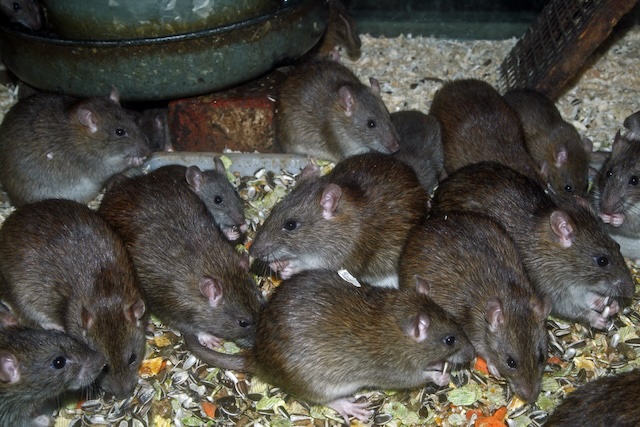Finding and sealing rat entry places is one of the most important things you can do to keep rats out of your home. Rats are very good at finding weak spots in buildings and taking advantage of them. Once they get inside, they can do a lot of damage. Here is a guide on how to find and successfully block rat entry points.
1. Look at the outside walls: Start your check on the outside of your house. Look at the base, walls, and siding for any holes or cracks. Even small holes can be easy for rats to get into. Utility pipes that come into the house should get extra attention because they are frequent entry points.
2. Check the edges of your roof. Rats are good at climbing, so they can easily get to your roof. Check the rooflines, especially the areas near vents, chimneys, and roof joints. Make sure there aren’t any holes or gaps that could be used as entrances.
3. Check the Doors and Windows: Rats can easily get in through doors and windows that are broken or don’t fit right. Look for holes in the frames and seals. The weather stripping around your doors and windows should be in good shape, since rats can get in through even small gaps.
4. Fill in the gaps around pipes: Rats can get in through utility lines that come into your home. Use steel wool and caulk together to fill in holes around pipes. Rats find it hard to chew through steel wool, which makes it a good barrier.
5. Check around in crawl spaces and attics. Rats like to nest in crawl spaces and attics. Look closely at these places to see if there are any holes or openings. To close off holes, use wire mesh or another suitable material that is strong and can’t be easily chewed through.
6. Keep vent openings safe: Rats can also get in through vents. Keep vent holes safe with mesh screens. These screens let air flow but keep rodents out. Check your screens often and replace any that are broken.
7. Fix garage weaknesses: Rats can get into garages through a number of different openings. Make sure the garage doors are properly sealed, and look at the areas around windows and doors. Make sure that the garage doesn’t have any holes or gaps that rats could use.
8. Get rid of waste. Rats like to hide in places that are cluttered. Get rid of the extra stuff that’s taking up space in your basements, sheds, and storage areas. Rats will be less likely to build nests if there are fewer places to hide.
9. Fill in small holes or cracks in the base or walls with concrete patching. Rats are good at getting through small areas, so it’s important to seal off any possible entry points right away.
10. Regular Maintenance: Making your house less appealing to rats is an ongoing process. Check and fix up the outside of your house on a regular basis. Take care of any damage right away, and keep an eye out for new entry points that may appear over time.
11. Get Professional Help: If you’re not sure how many possible entry points there are or if you think you have a rat problem, you might want to get professional pest control help. Professionals in pest control can do a full check, find weak spots, and offer effective solutions.
12. Pay attention to your landscaping. Overgrown plants, especially ones close to your home, can give rats a place to hide. Maintain your landscape and cut back plants to make it harder for rodents to hide.
Finding and sealing the places where rats can get in is a smart and effective way to keep them out. Key parts of keeping rats away are regular inspections and up-to-date maintenance of the outside of your house. By fixing any holes or cracks quickly, you can make your home less appealing to rats and lower the chances of an unwanted rodent invasion.
